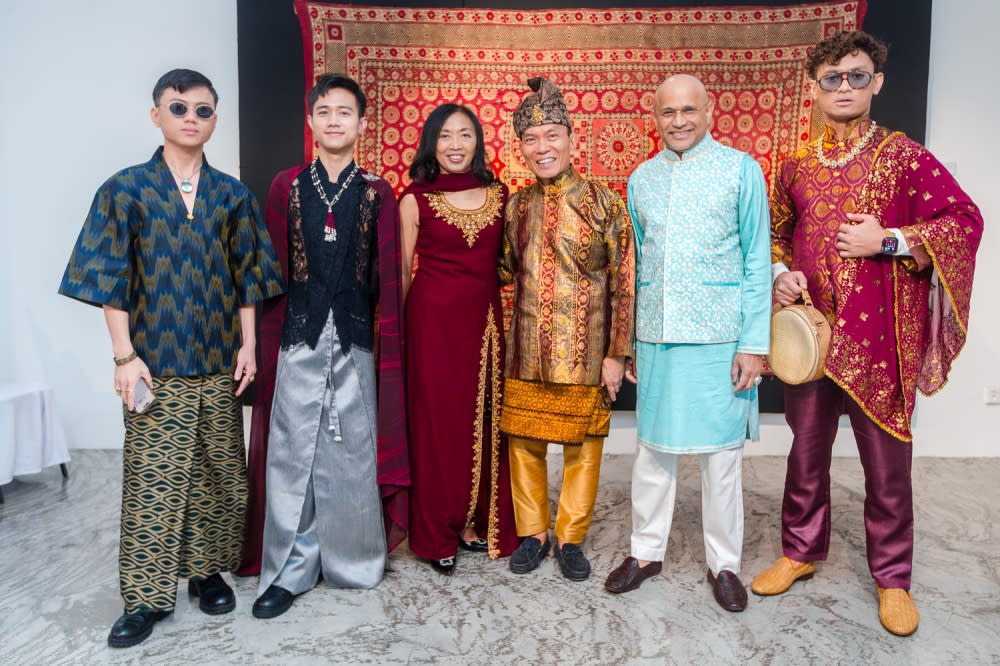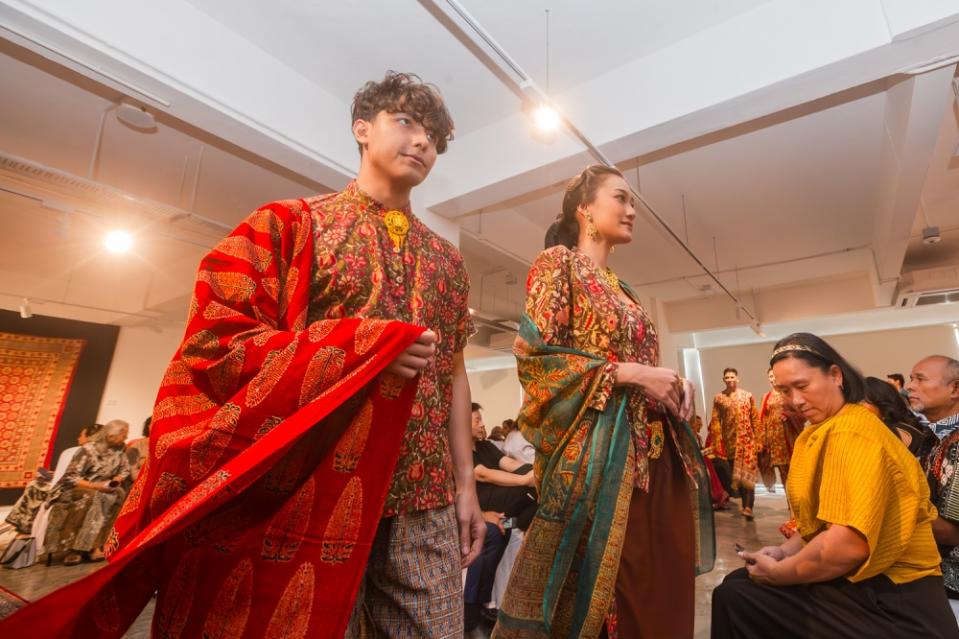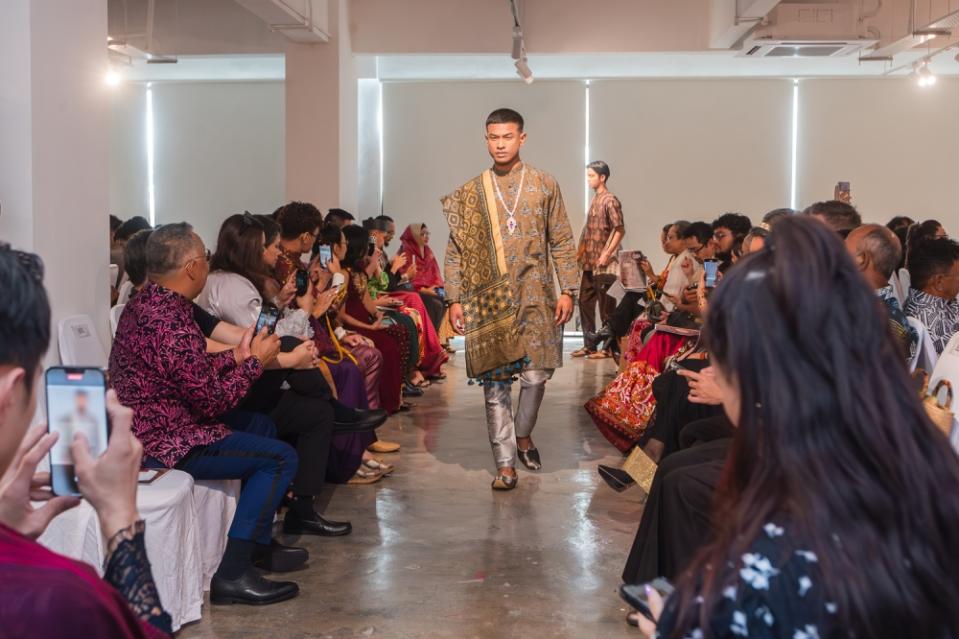Textile collector John Ang launches Samyama, a fashion line based on tradition and cultural diversity

KUALA LUMPUR, April 8 — Celebrities, socialites and the who’s who of fashion and textile arts were treated to an afternoon steeped in culture and finery at the unveiling of textile collector John Ang’s first Raya collection under his fashion line Samyama.
Held recently at Harta, jeweller Habib’s newly-opened art gallery and museum, the Sumptuous Moghul Raya collection showcased 28 looks that fused elements of traditional Malay and Indian wear.
The looks were accessorised by vintage jewellery from Habib managing director Datuk Meer Habib’s never-seen-before private collection, taking the glittering visual feast to greater heights.

Short-sleeved men’s shirt and fine cotton hand-block print baju kurung with scarves of traditional hand woodblock Ajrak print from Gujarat. — Picture by Raymond Manuel
Kurtas matched with sarongs and kebaya worn with lenghas were among the fusion combos fashioned from beautifully embroidered fabrics, newly acquired from India that were individually handcrafted using traditional, some almost extinct, techniques.
“The pieces are made of fabrics bought from Varanasi and Lucknow, so they’re all for sale, except for a few vintage skirts from my private collection,” said Ang, looking resplendent in a baju Melayu and sampin made from material sourced from India, Kalimantan and Terengganu.
Before the start of the show in a gallery specially adorned with textiles for the occasion, Ang and Meer gave speeches while classical dancer Rohini entertained with Rangi Saari, a Kathak dance.
Ang, 66, is the great great-grandson of Chinese Kapitan Tan Hiok Nee who made his fortune in the pepper and gambier trade and sold textiles to good friend Sultan Abu Bakar of Johor who ruled in the late 1800s.
Born in the United States and raised in Singapore, Ang spent half his life in Taiwan. He has amassed over 5,000 pieces of Asian, mainly Malay, textiles over the past 30 years.
An art historian with a Master’s degree in Art History from the University of Michigan, Ang ventured into antique furniture before he found his calling in antique textiles.
His Sumptuous Moghul Raya collection is a sequel of sorts to the hugely successful Malay World Textile exhibition he held last year which showcased 700 pieces from 12 categories of Malay textiles.
“To promote the appreciation of the traditional textiles in my collection, I hosted private fashion shows at my home,” said Ang, adding that many people who attended asked if the attires were for sale.
Since they weren’t, he decided to purchase new clothing inspired by the traditional to recreate the vintage looks.
To his surprise, they got sold and eventually, he started putting together more vintage outfits using new fabrics.
“Finally, I decided to start Samyama, my own line of clothing based on tradition and cultural diversity,” said Ang, adding that he designed his Raya collection with the advice of designer Rafiz Razali of Rumah Hartiqa, who did the tailoring.
“I see my clothes as based on something that was part of fashion history. For this collection, I used the subtle blending of both Indian and Malay clothing traditions with respect to both.”
Interestingly, he made a kebaya using material traditionally used for the Indian lehenga skirt, which is worn with a choli top and dupatta shawl.
“Since the choli top looks more like a bra and is too revealing for the Malay Muslim community, I converted it into a kebaya instead. A kebaya with a lehnga is my way of reviving and preserving tradition while innovating at the same time.”
As the grand finale, a fabric featuring special white on white embroidery known as chikankari, was shown. This technique using gold ribbon embroidery is known as kamdani in India, kelingkan in Malay and keringkam in Sarawak.
“In the olden days, everyone from the royal Malay courts, from the courtiers to the kings, queens and nobility would wear clothes made from specially imported Indian textiles from the Mughal court because it was so expensive,” said Ang.
“This collection is my way of bringing it back to the present.”

Cotton kurta with hand-block print of Mughal floral pattern. — Picture by Raymond Manuel



